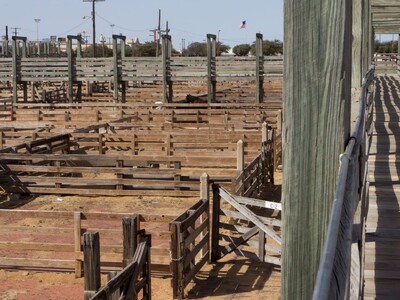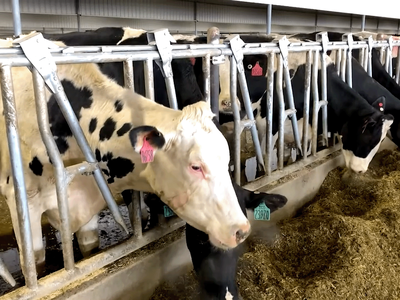Black Vultures
USDA researchers are looking into a variety of ways to effectively deter black vultures, which have been known to prey on livestock and are increasing in number in the United States. No matter what the wildlife species. You don't want to get really too comfortable just using one tool because the birds or any wildlife can really become acclimated or desensitized to that. So you want to keep from getting a little bit. Lee Humberg, Indiana state director for USDA's Wildlife Services advocates starting with non-lethal methods. That doesn't always work, right? I mean, sometimes the birds are going to be there whether you want them there or not, or they just don't care what you do. In that case. I get a little bit more creative when I called effigies and essentially they are dummy dead birds or artificial or taxidermy birds that represent a bird that has died there. An effigy is aimed at sending a message to the other birds. I've always likened it to sending up a black flag on a pirate ship. You know, it's kind of a warning to stay away. So hopefully the birds associate the dead brethren being there is not the place to be. He says the trick with an effigy is to make it look as real as possible. You really want to sell them with the vision because you know, they could care less about their buddies smelling whereas vultures do have a greater sense of smell than I. But black vultures not as well developed sense of smell from the literature compared to Turkey vultures. So sometimes they kind of follow turkey vultures around turkey vultures find the food and then they kick them off because they have a slightly more aggressive temperament. It's definitely one of our most effective tools to deter them. But as Lee spoke to earlier, we almost never put all of our eggs in one basket. That was Brian Kluver, who is with USDA's Wildlife Services in Florida. He gives other examples of non-lethal means of deterrence at places like communication towers. It's OK in that area and it's in accordance with the local ordinances. May use bird bangers and firecrackers and effigies and potentially even a handheld laser to really maximize that initial deterrent stimulus. And they seem to have quite a proclivity for rubber type objects. For example, in Everglades National Park and some of the visitor centers, they actually have tarps available for the public to put it over their vehicles because at certain times of the year, the black vultures want to come in and tackle at the windshield wiper blades and the gasket. Meanwhile, researchers are looking at creative ways to deter vultures, such as using the wavy air dancer men that are commonly seen at car dealerships. So we have a project right now where we're looking at situations like flat roofs on large buildings, like imagine maybe a big restaurant or a hospital. And we're looking at solar powered versions of those and seeing if we can deter vultures from rooftops when they are damaging things such as the rubber membrane of those. This is Stephanie Ho for the US Department of Agriculture in Washington, D.C..














